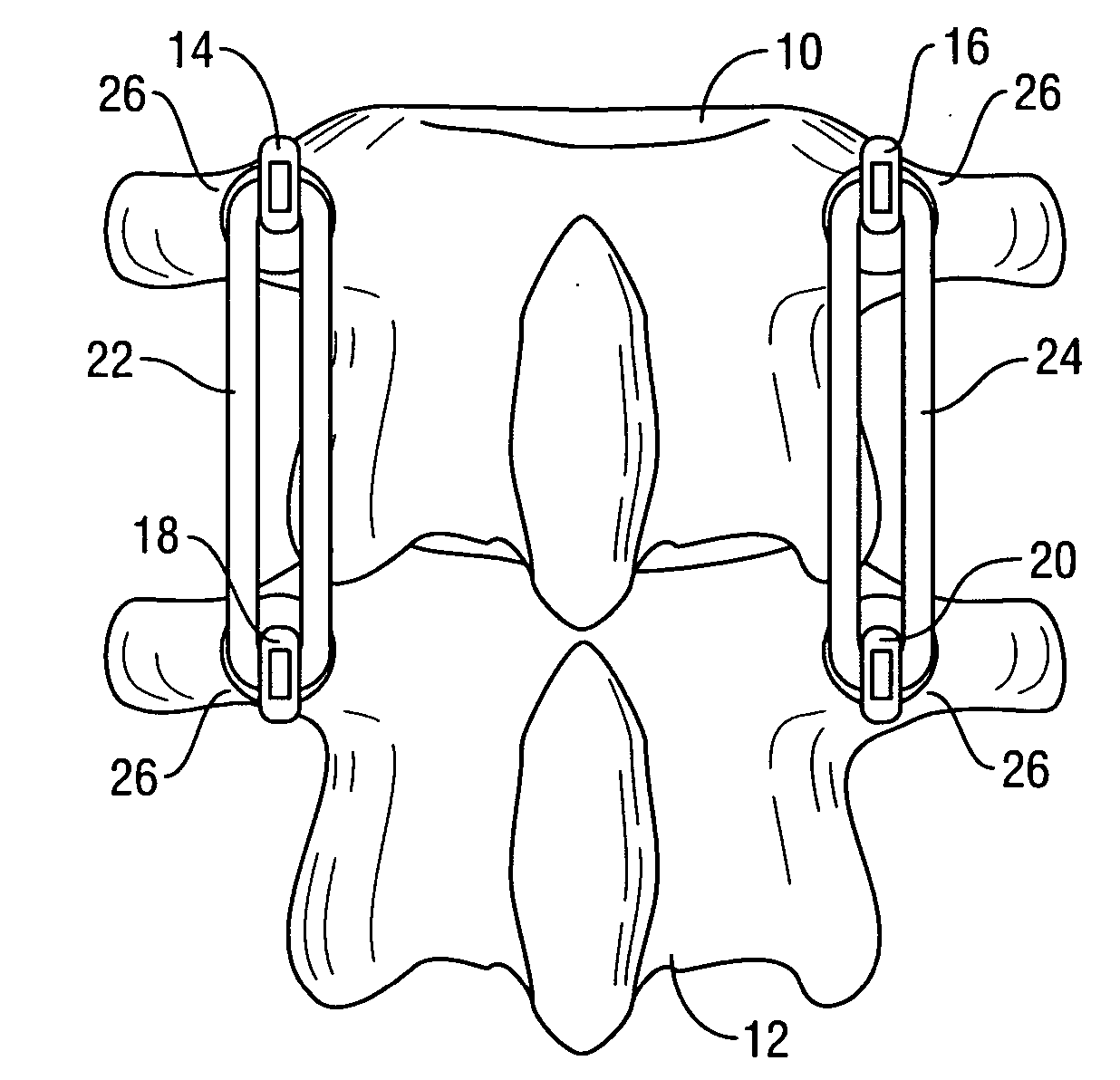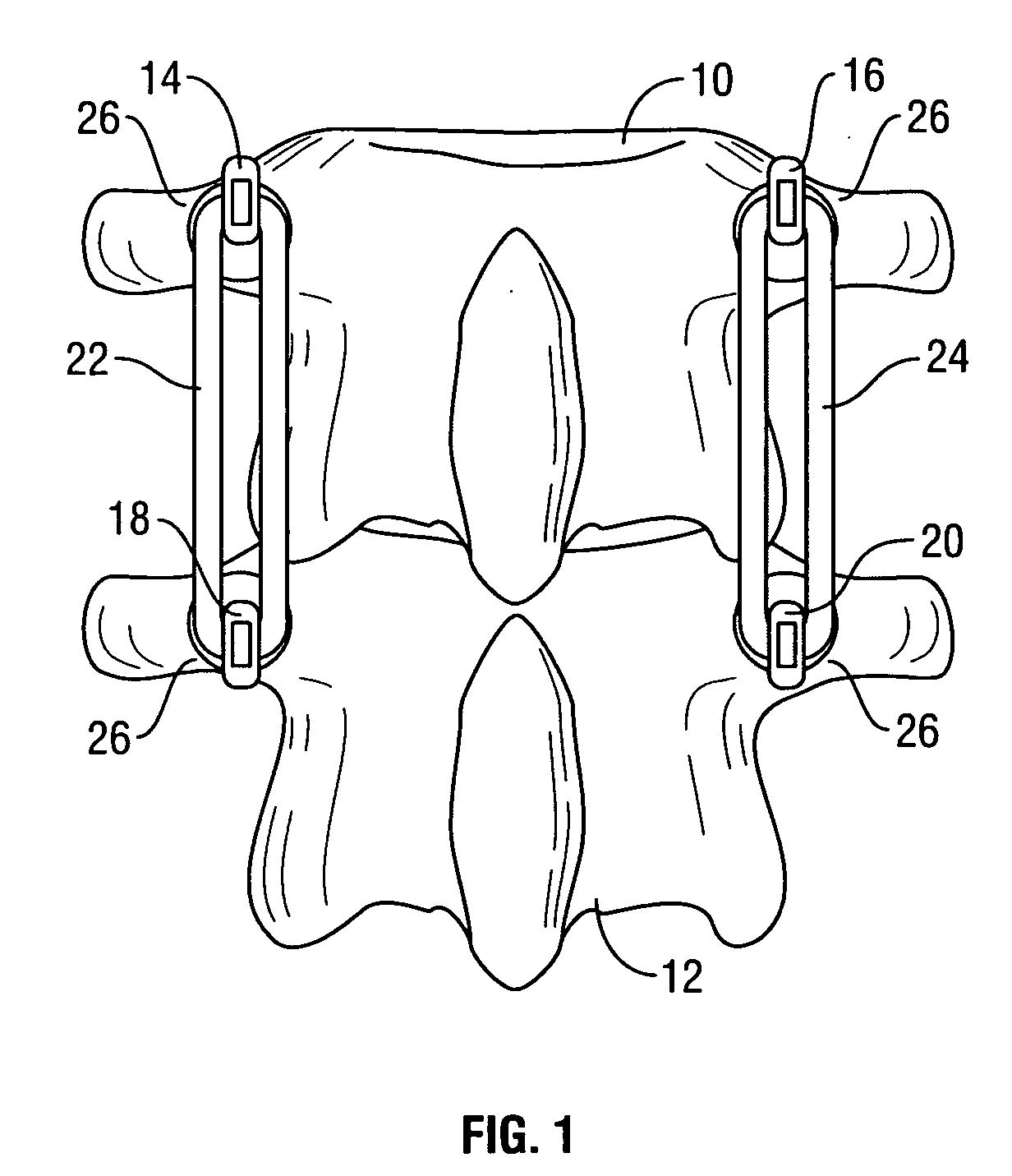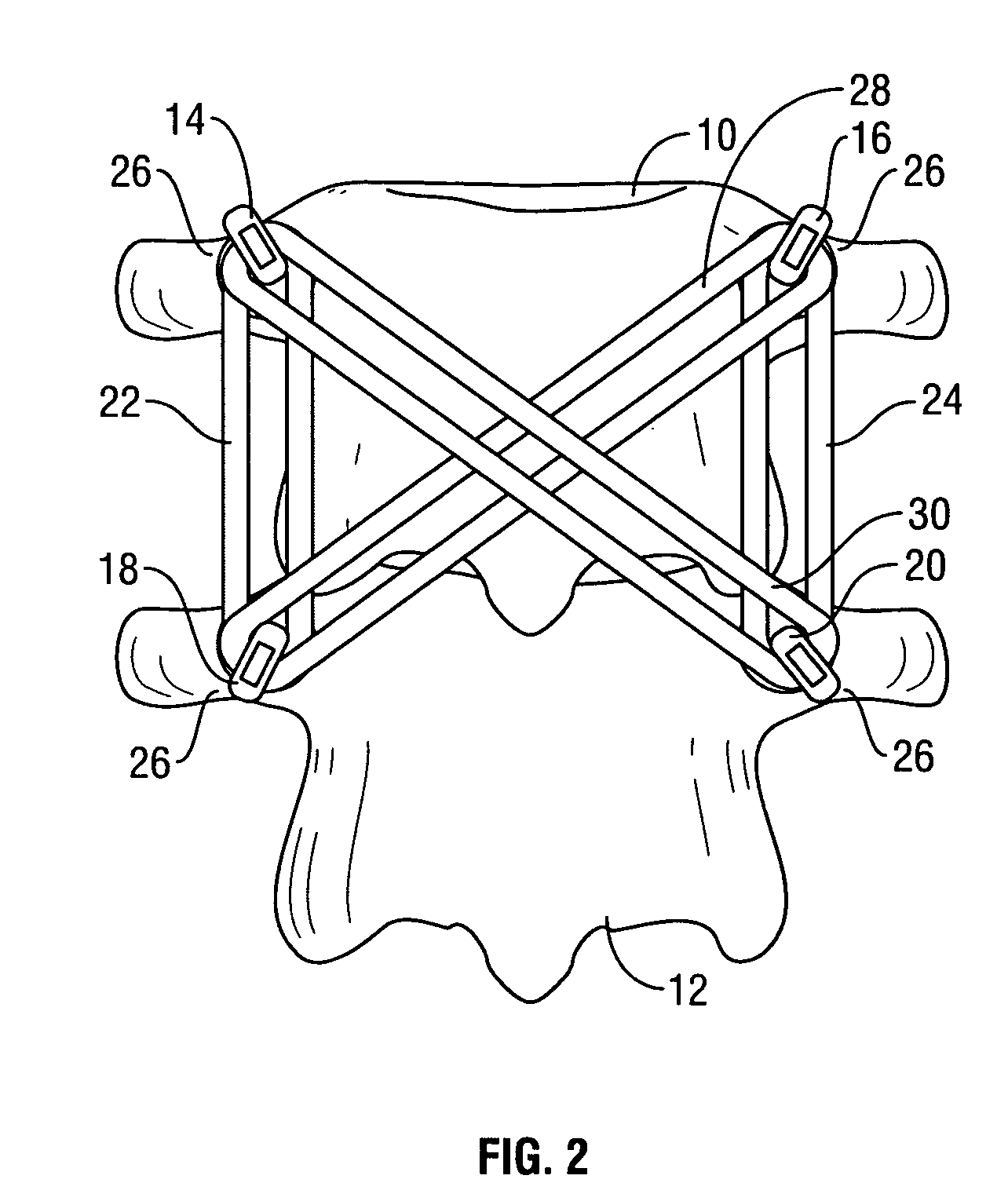Spinal stabilization system to flexibly connect vertebrae
a spinal stabilization and vertebrae technology, applied in the field of spinal stabilization systems allowing vertebrae to be flexible, can solve the problems of inability to lift heavy objects, inability to support load, and great discomfort of the spine, so as to prevent excessive motion, prevent the effect of excessive movement, and maintain a large range of spinal flexibility and mobility
- Summary
- Abstract
- Description
- Claims
- Application Information
AI Technical Summary
Benefits of technology
Problems solved by technology
Method used
Image
Examples
first embodiment
[0028] As is evident from the first embodiment in FIG. 1, the system of the present invention flexibly attaches two vertebrae 10, 12 while allowing the vertebrae to move relative to each other to the extent of the elasticity of the elastic bands 22, 24, thereby allowing the wearer to have a high degree of mobility and flexibility. Further, the few component parts of the present invention facilitate ease of application. FIG. 1 depicts the system of the present device as applied to two lumbar vertebrae 10, 12, with the anchor hooks 14, 16, 18, 20 attached to the vertebrae 10, 12 at the pedicle location 26. However, it should be recognized that the system of the present invention may be applied to any two adjacent vertebrae along the length of the spine. The location of the anchor hooks, however would vary from lateral masses in the cervical vertebrae to pedicles 26 in the thoracic and lumbar vertebrae.
second embodiment
[0029] the present invention is depicted in FIG. 2. The second embodiment flexibly connects two vertebrae 10, 12 while providing enhanced promotion of alignment and preventing listhesis. The second embodiment comprises all of the elements of the first embodiment, as depicted in FIG. 1, and further comprises: a third elastic band 28 retained by the left anchor hook 14 in the upper vertebra 10 and the right anchor hook 20 in the lower vertebra 12; and a fourth elastic band 30 retained by the right anchor hook 16 in the upper vertebra 10 and the left anchor hook 18 in the lower vertebra 12.
[0030] The second embodiment of the present invention allows flexibility and mobility while enhancing promotion of alignment. Further, the second embodiment of the present invention has very few component elements as compared with complex rod-based systems of the prior art. As with the first embodiment of the invention, the second embodiment may be applied, by varying attachment locations for the anc...
PUM
 Login to View More
Login to View More Abstract
Description
Claims
Application Information
 Login to View More
Login to View More - R&D
- Intellectual Property
- Life Sciences
- Materials
- Tech Scout
- Unparalleled Data Quality
- Higher Quality Content
- 60% Fewer Hallucinations
Browse by: Latest US Patents, China's latest patents, Technical Efficacy Thesaurus, Application Domain, Technology Topic, Popular Technical Reports.
© 2025 PatSnap. All rights reserved.Legal|Privacy policy|Modern Slavery Act Transparency Statement|Sitemap|About US| Contact US: help@patsnap.com



